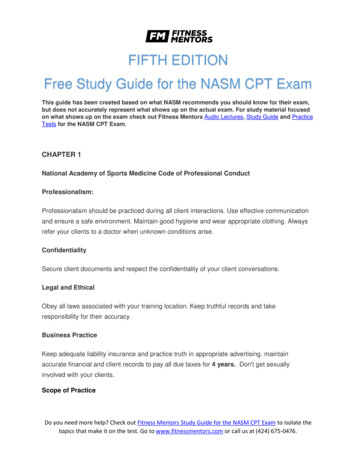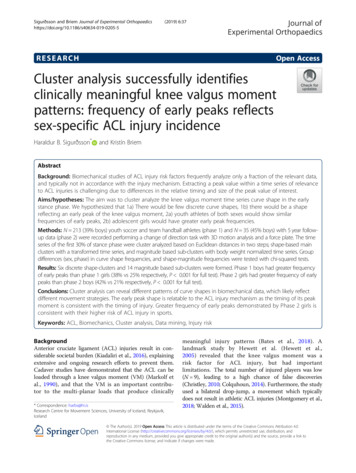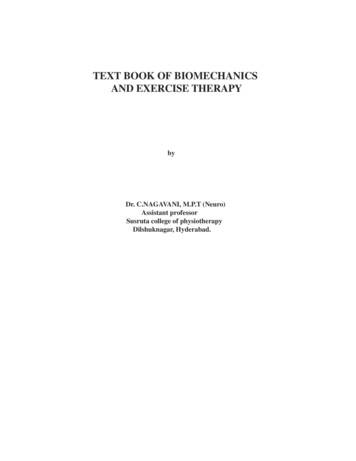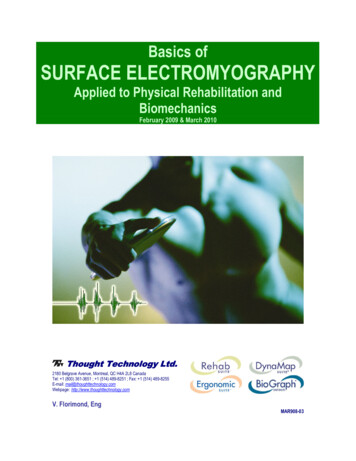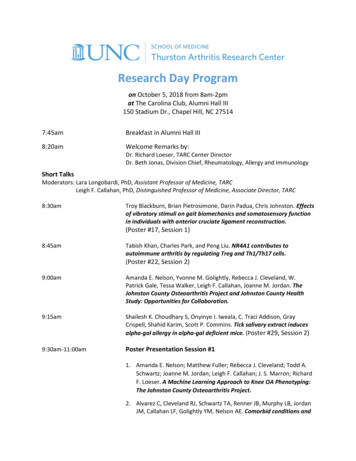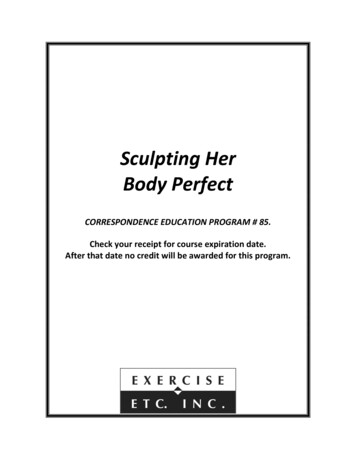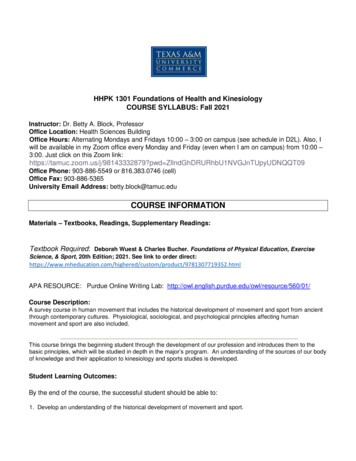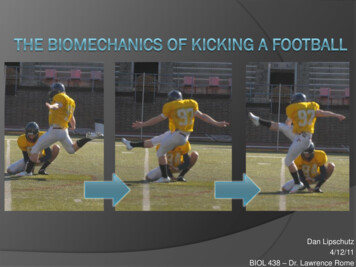
Transcription
Dan Lipschutz4/12/11BIOL 438 – Dr. Lawrence Rome
Background/HistoryKicking features proximal to distalacceleration, much like throwing Similar to cracking a whip “Straight-On” Technique “Straight-On” vs. “Soccer-Style” Origins Advantages/Disadvantages“Soccer-Style” Technique
6 Stages of the Kicking MotionApproach Swing-Limb Loading Plant Hip Flexion and Knee Extension Contact Follow Through
Approach
Approach 45 angle of approach producesmaximum peak ball velocity
Swing-Limb Loading
Swing-Limb LoadingLower leg is cocked back to prepare forupcoming downward swing Knee extensor muscles are key as theknee flexes and stores elastic energy
Plant
PlantForce and orientation of plant foot arecrucial Plant should be about a foot’s lengthaway from the ball and directionallyfacing the target Incorrect placement of the plant foot willdrastically affect both distance anddirection of kick
Hip Flexion and Knee Extension
Hip Flexion and Knee ExtensionFrom its loaded position, the thigh quicklyswings forward as the lower leg drivesdownward towards the ball Knee extensors help propel leg forward,releasing built up elastic energy
Contact
ContactKnee is extended, ankle is plantarflexed Hamstrings act in eccentric contractionto slow down the lower leg Kinetic energy transferred from movingleg to stationary football
Follow Through
Follow Through Longer time of contact improves transfer ofmomentum, increases ball speedProper follow through should improve bothdistance and accuracy, as well as help preventinjurySkipping through the kick provides power andhelps the kicker stayed aligned with the target
A Closer Look
Deformation of the ball upon contactBall deformsPre-Contactreturns to10.39%its originalduringwidthcontact!post-contact
Velocity Patterns Pre-Kick Foot velocity maximumearlyas theduringinlowerthe thehipleg isswing-limbflexiondrivendownwardand loadingknee extensiontowardphasetheasphaseball,the lowerpeakingas thelegthighjustis iscockedforwardpulledbeforecontactback is made Foot velocity Kneevelocitydropsis increasingdecreasesto a localasheretheminimumlowerat thelegonsetbefore makesofhipdescentitsflexion and knee extension
Force & Impulse Newton’s Second Law: F ma Assume average male leg weighs 20% of total body mass* M 39 lbsPer LoggerPro, acceleration prior to contact was 25.570 m/s2 F 455.5 N Impulse Force x time Assume foot is in contact with ball for .008 second ** Impulse 3.644 N-s*http://espn.go.com/video/clip?id flfootball/1877
Further QuestionsHow much force is generated by the plantfoot impact and how does this affect kickvelocity? Compare Straight-On and Soccer-Styleapproaches and the forces/velocitiesassociated with each How are the forces and velocities differentwhen one attempts field goals of differentdistances? Do mechanics noticeablychange past a certain distance?
References hanics-soccer.htm#refBahr, M. (1992, September). The Mechanics of a Field Goal. Popular Mechanics,volume, 36-39, 113.
The Mechanics of a Field Goal. Popular Mechanics, volume, 36-39, 113. Title: The biomechanics of kicking a football Author: Daniel Lipschutz Created Date: 2/10/2012 3:40:12 PM .




